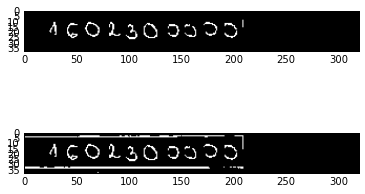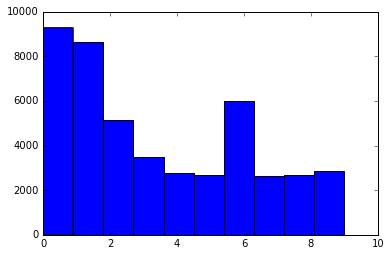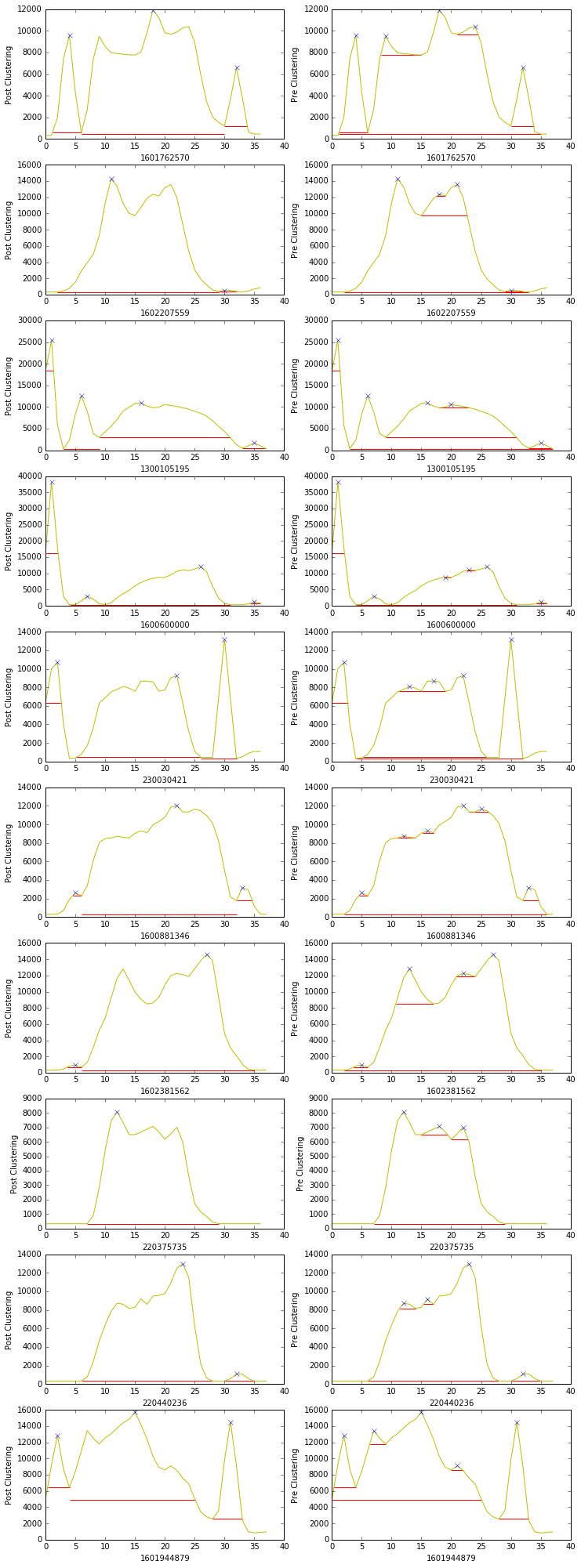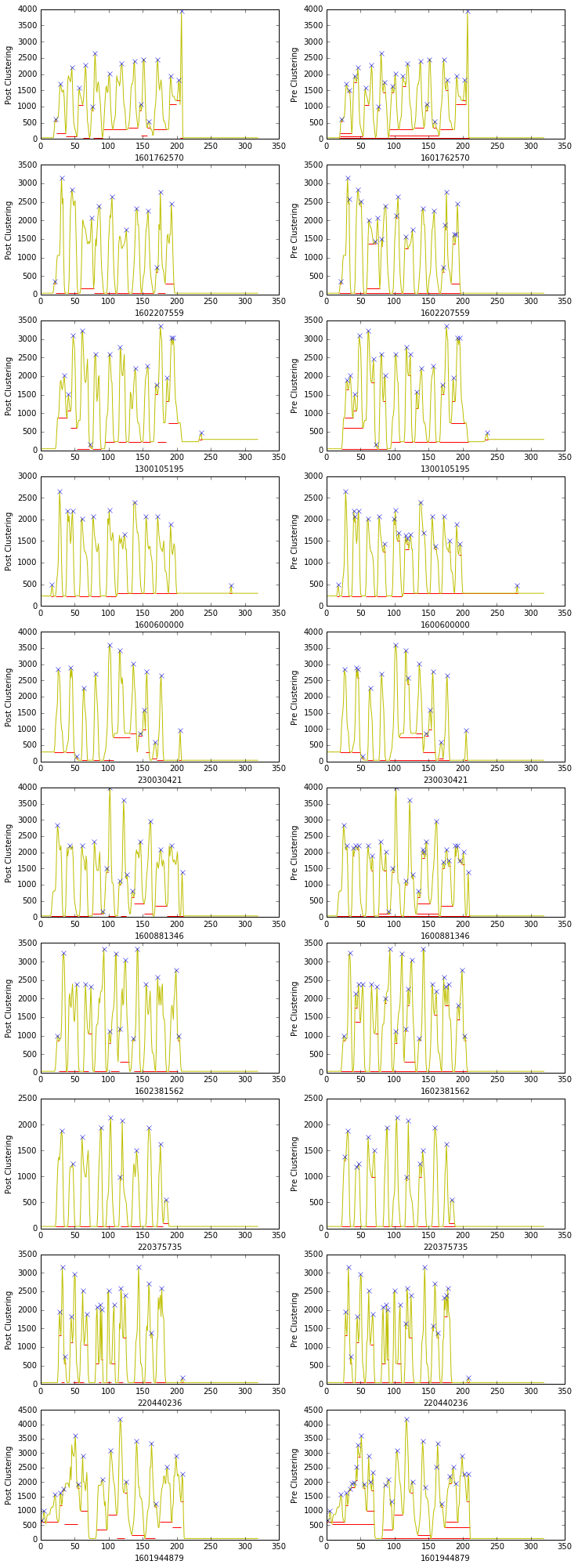Read a hand written number on different types of physical forms. Number may be of arbitary denomination (length), is not OCR friendly (is not enclosed within printed boxes - check below) and may contain noise. cost of misclassification is 100 times than that of classifying a number as UNKNOWN
Relevant Metrics:
- Correct Classifications: the predicted number matches the expected number exactly
- UNKNOWNs: predicted number could not be determined reliably
- Misclassifications: algorithm predicted number XYZ but the expected number was different.
The cost of a misclassification is 100x the cost of UNKNOWN (heavily prefer UNKNOWN to mispredictions)
Performance: 95%+ number reading accuracy while correctly detecting majority of misclassifications as UNKNOWNS.
Note: All code has been moved to aggregated_pipeline.py except CNN architecture and training code which is in data_exploration.ipynb
data_exploration.ipynb contains data exploration, visualizations and experimentations with same code but is dirty and un-refactored
Unsupervised Peak Clustering algorithm to remove horizontal/vertical noise from image. Yields pretty good results.
Run in Jupyter notebook from same directory
import cv2
import matplotlib.pyplot as plt
%matplotlib inline
import numpy as np
from aggregated_pipeline import image_augmentation_pipeline, filter_horizontal_noise_yaxis_projection, filter_vertical_noise_xaxis_projection
img = cv2.imread("regions/1602300000_ae61d5.png")
label = "1602300000"
gray = cv2.cvtColor(img, cv2.COLOR_BGR2GRAY)
thresh, blur_img = image_augmentation_pipeline(gray)
masked = np.copy(thresh)
filter_horizontal_noise_yaxis_projection(blur_img, masked)
filter_vertical_noise_xaxis_projection(blur_img, masked)
fig, (ax1, ax2) = plt.subplots(2)
ax1.imshow(masked, cmap="gray")
ax2.imshow(thresh, cmap="gray")
Easy to use and extensive functionality classes that support tree like hierarchy, merging, splitting, etc
Run from CLI in same directory
from aggregated_pipeline import MergedBox, Box
x, y, w, h = 10, 10, 10, 10
x2, y2, w2, h2 = 5, 5, 10, 10
box = Box([x, y, w, h])
print(box[2], box.area())
mbox1 = MergedBox([x2, y2, w2, h2])
mbox2 = MergedBox(box)
mbox3 = MergedBox([mbox1, mbox2]) # can't contain
mbox_left, mbox_right = mbox3.recursive_tree_split(x=7)
print(mbox_left)
print(mbox_right)
mbox_merged = mbox_left + mbox_right
print(mbox_merged, mbox3)
# Note: only compares superbox for equality checks for now, not constituent boxes
is_equal = mbox_merged == mbox3
print("Parent and addition box equal? ", is_equal)
print(mbox_left.overlap(mbox_right))
performing this via finding and merging peaks on x/y projections with provided threshold and removing noise patterns
- First, all contours are detected in an image using opencv and encapsulated in MergedBox/Box classes
- Performing clustering via merging and splitting Boxes with appropriate heuristics
- Noticing that boxes will form a tree like hierarchy in an image, merging and splitting until optimum segmentation is achieved
features were engineered which have high predictivity for finding merge and split candidates.
- For now, thresholds are hardcoded and there's scope of using clustering algorithms like kmeans or hierarchial clustering like agglomerative
over these features
- We split boxes which may have multiple digits conjoined like '00' by primary detecting and clustering peaks on the image x-axis projection
- Then separated digit images are extracted (centered and of the same size) for training
Trained only on accurate results from digit extraction algorithm
97% accuracy on test set, 94% accurate on whole dataset
Since cost of misclassification is 100 times than that of classifying a number as UNKNOWN, probability thresholding is used to ensure classifier is certain about it's prediction for the entire number.
95%+ accurate - while rejecting UNKNOWNs (for unsure classifications) (18% UNKNOWNs, approx = 1 - 0.97^9) but correctly labels (94%) individual digits
There's a lot of scope for improvement in terms of:
- Improving CNN model architecture
- Augmenting data to increase classification accuracy
- MNIST pretrained models deep learning (transfer learning)
- Adding two new output classes: digit-boundary class and double-digit class and generating training data for both
- Adding dual digit detection classes to detect conjoined digits i.e. (00) and generating data by merging two individual digits
- Improving Bounding box clustering by leveraging the engineered features with a clustering algorithm like DBSCAN, agglomerative
- Using trained classifier to generate digit boundary scores (on areas of low threshold probabilities)
- Merge and Split routines can be improved by tuning thresholds further or adding more filters
- Training a classifier to detect incorrect classifications by feeding training data engineered from probability scores, maximum classwise probability, mean and std deviation, class balance history, past mistake history, raw image data, other engineered features, etc to generate a probability of a digit/number classification being correct. (This should be able to detect things like 1 being likely to be mistaken as 0, 5 being likely to be mistaken as 2, so if probability scores of 5 and 2 are comparable, this is an uncertain classification)
- Using moving window classifier to detect digits boundaries and digits
- Using LSTM with Connectionist Temporal Classification (CTC)
- Autoencoders: encoder/decoder-type approach
- Stroke completion algorithm to complete faded/unclear digits
- Investigate YOLO and region proposals, single shot algorithms
https://docs.google.com/spreadsheets/d/19vBYosoy1mu7PmBCad_bZ8mePfNMGFI1C2KPwpiBASM/edit?usp=sharing
git clone https://github.com/rbcorx/handwritten-digit-extraction
Env: python 3.5.2 (setup Anaconda: strongly recommended)
cd handwritten-digit-extraction
`pip install -r requirements.txt`
OR
`pip install -r requirements_compressed.txt`
conda install opencv
>>> from aggregated_pipeline import NumberReader
>>> nr = NumberReader()
>>> nr.read_from_filename("regions/20111823_6884a0.png")
'20111823'
return uncertain label instead of 'UNKNOWN' for inspection (how many digits were predicted correctly)
>>> nr.read_from_filename("regions/20111823_6884a0.png", thresh=False)
'20111823'





